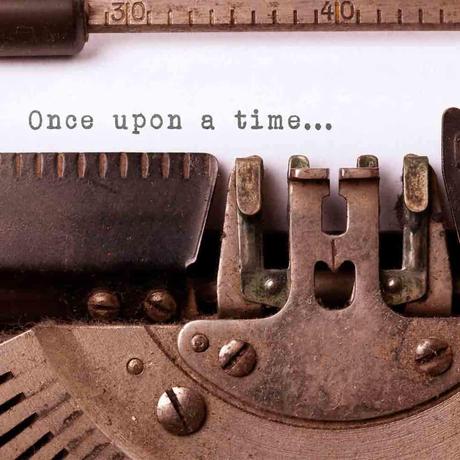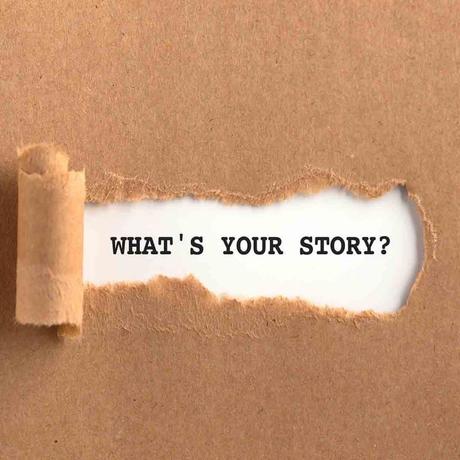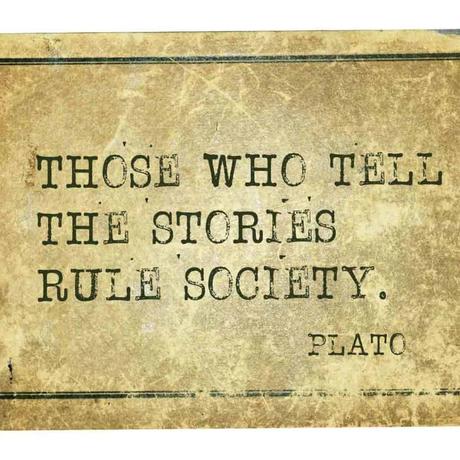
This post is a little different from the previous ones, we will tell you the magic formula to tell a story. Never dare underestimate the power of a good story. Its use is increasingly popular for various purposes related to persuasion. Telling a good story will be useful whenever you want to generate a connection and send a very strong message. In addition, it is applicable to multiple life scenarios. Today we will tell you how to tell a magical and powerful story.
Perhaps some people will think that at the age of 23 you still haven't read the book that will mark a before and after in your life, but they have no idea. Paul Smith with "Sell With a Story" certainly lit a room that was kept dark in my brain. How could it be possible that I had never noticed it when it was there all the time? Society's passion for films, books and novels that tell stories in which we fully immerse ourselves, feeling every sensation of the protagonist. Stories have been part of the world since its creation, and it is the mechanism that has been used since ancient times to transmit all the information we know today; that makes them so valuable!
The stories have enveloped, trapped and manipulated each one of our neurons until unleashing in us a tide of sensations and attitudes.
Storytelling, or the "art" of storytelling, as you might also call it, has incredible power in people's brains, telling a good story gives you the opportunity to connect with the mind and heart of an audience. Imagine being able to master this technique... It's simply wonderful, and none of this happens by magic.

You'll know what's going on in your brain and body when you hear them and why you feel so identified. We will follow this path hand in hand with the word of Paul Smith who made his bestseller "Sell with a story" a bible.
Paul Smith, in his book, begins telling us how was his first contact with the power of storytelling, just from that moment I felt captivated and it was inevitable to continue traveling with him through its history. It goes like this.
Paul narrates that he accompanied his wife to a major photography exhibition in which he honestly understood nothing at all. Unlike his wife, who danced through the corridors as if it were her dream place. Paul is a businessman, photography is definitely not his thing, however he got caught up seeing one that was very attractive to his wife: it was the catch that captured the exact moment when a piggy swam towards the dock with its small nose full of sand. As the couple looked at the photograph, its author approached them very slowly and it was inevitable that Paul, curious, would ask what it was about. The photographer told us that the little pigs lived on a deserted island in Big Major Key in the Bahamas. The animals were left there by a group of sailors, and when they did not find food on land they had to learn to swim to look for it; from then on, piglets are born with the ability to swim. The island is now known as "Pig Island" and is one of the busiest tourist destinations in the Bahamas.

After listening to the story Paul was moved, only thinking about how beautiful and intelligent nature was, and how it manages to "make its way" (quoting the famous scientist from Jurassic Park). But in addition to that, he thought of the fact that this simple photograph, which for him had had such little meaning, had suddenly become a brilliant work, which summed up in an image the immensity of nature. Before the eyes of Paul and his wife, this image began to be worth gold, all thanks to the story behind this photo.
In this post you will find
Why should I handle Storytelling?
Whether explicitly or implicitly, stories are the most effective way to connect with an audience and get the message you want to carry received and accepted, for a variety of reasons:
First, a good story has the ability to pass on to anyone, regardless of age, sex, or education. As humans, we empathize with the stories of other humans, and even if it is not comparable to our own, we will easily be touched by it.
Stories can generate a deep spiritual connection that invites people to reflect on their own lives.

How to tell a story?
Now that you understand the importance of this tool and how it works, we'll see how to build a good story. First of all, it is important to understand that there is no magic recipe or specific order. Yes, there are certain components that allow you to give it form and flavor, but the reality is that the way you dare to explore with the elements, exchange them, and add more seasonings, is what will allow you to conceive a masterpiece.
Pixar is one of the most incredible machines when telling a story, it is practically inevitable that we feel touched by them. However, movies and books are not the only places where we see stories; advertising shows us very short stories. And this tells us that there is no specific extension to generate an impact.
Only a few essential components are needed: hero, context, objective, conflict and resolution. Magic lives in the ability you develop to describe each element. What do you want to achieve with it? What do you want the reader to feel or do after consuming it? Once you have these two clear answers, it's time to move on.
It is essential to define the purpose of the story at this point, because the idea is to use the words and arguments necessary to get the reader to activate the emotions we want. Have you heard about the cocktail of happiness? We'll see about that later.
Structure of a story

As I mentioned before, there is no magic formula, but there are magical elements, which organized and developed in a correct and precise way, work like magic:
Main objective or main message: Basically it's about thinking a little: What do you really want the reader to do or feel after reading the story? The most effective beginnings are those that have a question mark, a flashback, or simply create curiosity in some way.
Context: Where do the events take place?Who is the hero and what are his motivations and passions?, is there any other element behind that is considered essential?

Challenge: In this part of the story, the protagonist's challenge and opportunities for accomplishment should be explained in an attractive way.
Conflict: Conflict is the climax of history, for that reason it is the right moment to use the necessary weapons to release the whirlwinds of hormones that arouse the emotions of the consumer. It is important to show aspects that can generate impact. One of the most frequent elements is to show the hero and the villain from their innermost and honest part.
Resolution The resolution shows how the sequence of events resulted for everyone, how the situation changed and what the result was. It is important that the facts look real and that the reader can somehow identify with them.
At each stage of the story it is important to identify what emotions the reader should feel. This will allow you not to lose focus. It's very interesting when you move elements from the context to the end, you just have to have a little imagination.

Once we have described the essential elements of a story, we will talk about the "Cocktail of Angels". This cocktail consists of the mix of hormones that we need to awaken in the reader at the moment of telling a story:
Cocktail of the Angels

The magic of the effect of stories in people, takes place due to the action of three hormones that shoot the endocrine glands towards all our body, they are: dopamine, oxytocin and endorphins.I will explain them in a not so common way:
A month ago I got a call from a major agency. In this workplace they are recognized for working with important brands such as Adidas, New Balance, Fila and many others. I approached the interviewer's table and he continued to ask me about my previous work; everything was going well until I showed him some writings about magic stones and how thanks to their existence human beings are linked to the earth. The interviewer was amazed with the words and began to ask many more questions about the subject, it was at that moment when he got up with much enthusiasm, smiling and proceeded to show me a special corner in the work space. When I got to the place I couldn't believe what I was seeing...
Well, at least for today this will be all about this story, I won't tell you what was in the special corner, because the important thing right now is that you will surely be imagining what was in that place... You feel intrigue, concentration and now you are imagining possible scenarios.
All this happens thanks to the dopamine that flows through your body to hear stories like the previous one, that is one of the hormones that make up this cocktail of angels and is essential to catch the attention and make the first connection with the person who reads the story. You'll need it if you want the reader to finish the story you developed.
Now we go to the second one:
This story is not so happy and interesting, I just wanted to tell you that in just 3 months I will be a year since the last time I saw my mother and father. I had to leave my country of birth where I lived for 22 years and met the most significant people. I had to leave because the political and social situation created a climate of insecurity, fear and uncertainty for young people. That is why in the last 3 years, families have had to disintegrate in order to fight for a better destiny. It just seems crazy to me as I am now in the south of the world, far from home, missing my mother's hugs and my father's advice. I have learned to do everything on my own and fend for myself.

Yes, this story is real and I'm the protagonist of it, but that's not the most important thing today, because I know that this story awakened your human and understanding side, you feel closer to me and in confidence. This feeling is the right one to describe oxytocin; a hormone you'll need to awaken if you want your story to move the reader.
Finally, we'll talk about endorphins, those hormones that wake up the funniest part of you. You don't need to tell a story for this one, just remind yourself of the last thing that made you die of laughter. Endorphin is activated with happy and fun information. You'll also need it to tell your story.
Each of these hormones generates a different sensation and can be used independently to tell your stories; however, together, they form the cocktail of happiness. If you manage to awaken all three of them in your story, don't doubt their success.
An irresistible story must be made up of certain basic elements. As a reader you may not notice it, but each of them contributes a grain of sand to cause a wave of sensations in your body. Knowing them and putting them into practice will empower you.
As New York University social psychologist Jonathan Haidt observes: " The human mind is a processor of stories, not a logical processor."
Once you know which are the most important elements to develop in a story and which are the emotions to look for, it is necessary to know some dressings...
These are little details that used intelligently will add value and emotion to your story, here they go:
"Tell me": if the character was scared, show it, find a way to manifest fear. The same happens if the character is in love, happy or upset, the idea is to manifest it, the reader must be infected with that feeling of happiness.

"Show Me": describes the behavior of that emotion, for example, if a character was crying, give more details. Don't be afraid to be too descriptive.
"Make me feel:" creates curiosity, anticipation, "anxiety", the idea is that the person reading the story you tell feels the same as the characters.
There are three types of apprentices: 40 percent of us are visual apprentices, 40 percent are auditory apprentices, and the remaining 20 percent are kinetic apprentices. Stories attract all three. The images influence the visuals, the vocabulary attracts the auditory and the emotions and feelings are connected with the kinetics.
To finish, I want to give you these 5 necessary maxims that you must never leave aside when telling a story. Write them up near your desk and remember them every time you sit down to let your imagination run wild.
- A story should excite, no matter the excitement, the important thing is that it is strong and easy to reach.
- A story must be magical and extraordinary,no matter what the story is, whether it's about superheroes, your cat or your love for your neighbor; remember to use the most beautiful and precise adjectives and attributes.
- A story must motivate.
- A story should be easy to tell and repeat.
- A story must have a leitmotiv. The leitmotiv is the raison d'être of the story that the brand is telling, and the one that will make the reader fall in love with it.
Every time we identified with a message, it carried an implicit story. It is an essential tool, and the best thing about it is that you don't have to be a genius, nor do you have to follow a set of rules. You just have to have the main recipe and then let your imagination run wild. After all, no one can resist strong emotions.
Paul Smith managed with "Sell with a story" to put together an exquisitely concrete recipe book about the formula to make the audience fall in love through exciting stories. And thanks to an impulse, I have shared them with you. So, what are you waiting for to begin to apply it? Remember, the secret is to know how to recognize the emotions you want, identify the hormones and take advantage of the moments indicated.
Originally Post "Storytelling o el arte de contar historias″
Translated by Oscar Moreno
